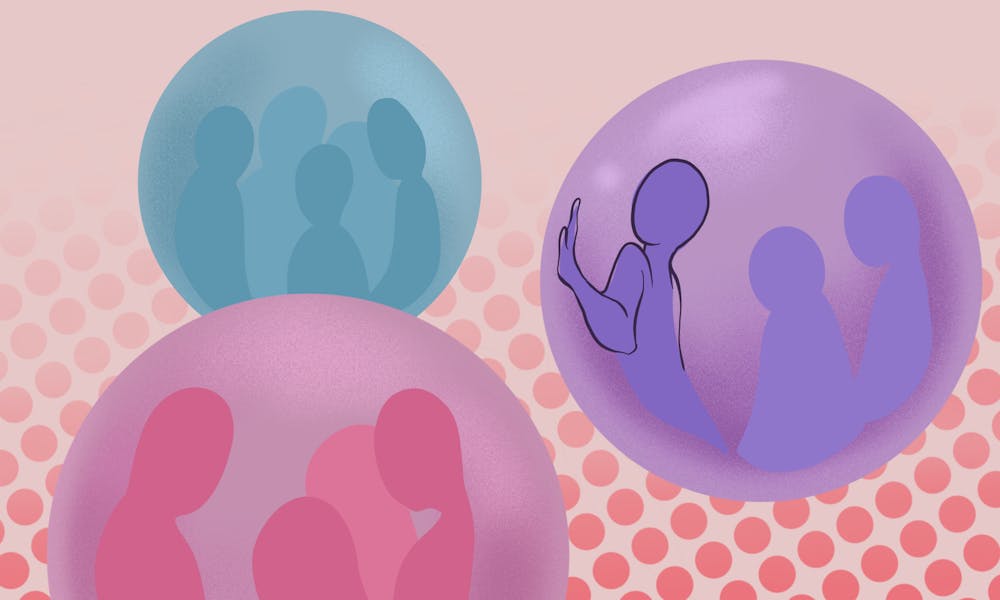There is no question that Penn is incredibly diverse — comprising twelve schools and a student body of more than 25,000, Penn’s community comes from a variety of races, genders, sexual orientations, religions and socioeconomic backgrounds. But diversity means more than data points and percentages. On the ground, intermingling between people of different demographics occurs far less than it should.
As a person of color that grew up in the South, most of my friends have always been white, and this was my expectation coming to Penn as well. However, this couldn’t be farther from the truth. Given my family's roots in South Asia, many of my friends on campus come from the same area. This occurrence doesn’t pertain to me alone. Walking on Locust, into any dining hall, library, or lounge, racially homogeneous cliques are blatantly evident. This gravitation towards something familiar when put in a new environment didn’t come as a surprise at first, but as I approach my second month at Penn, why has this remained the norm?
A 2011 study explored the correlation between the impacts of the omnipotence of choice in friends and how diverse our friend groups become. "The ironic finding is that in more diverse environments, we find less diverse friendships,” author Angela Bahns says. Another study in the American Journal of Sociology states that “What really matters isn't the mix of students as much as what the schools do with the mix of students." While Penn has fostered an environment for the formation of over 140 different cultural clubs, when are these clubs, if ever, intermingling? In fact, this is just resulting in making us more exclusive in who we associate with and who we let associate with us.
Racial homogeneity limits our ability to perceive information in an open minded manner. Without the exposure to different people with different perspectives, we start to form surface level stereotypes about certain groups, as seen in a Cultural Diversity and Ethnic Minority Psychology paper. Once these stereotypes are established, it’s very difficult to change our way of thinking and discriminatory behavior becomes widespread.
These past couple of years have been particularly difficult for many people. From pandemics to protests, America is still struggling to overcome racial inequity. We are the latest generation of adults, and by embracing and respecting our various differences we can truly become the so-called “melting pot” we currently label ourselves.
So what do we do now?
While many people find that staying inside your comfort zone is a safe alternative to social awkwardness, this results in no growth. Approach someone! Sounds easier said than done, yes I know, but start off easy. Talk to that person you always see filling up their Brita in the hallway at 2 a.m. Go knock on your loud next door neighbor’s door. Meet up with that person you only see in lecture. Regardless of your similarities or differences, communication is the first step towards gaining a multicultural perspective and becoming a kinder community in the future.
We can sit around all day and have the privileged conversation of how to fix these problems, but without acting now, while we have the opportunity to talk to people from around the world, we are just harming ourselves. I remember what drew me to Penn was the realization that this will be one of the only times in our lives where we will have the ability to learn about how different people think and where they come from. For the rest of our lives, we will be surrounded by people in the same professional fields as us, closing off our circle. In the end, when we breach these barriers, we may realize that what we thought about certain people is not even remotely close to the truth.
LIALA SOFI is a College first year studying health and societies from Roanoke, Va. Her email address is lsofi@sas.upenn.edu.









